Abstract
The adequate management of severe pain in accident and emergency departments depends on knowledge of the pharmacology of analgesic drugs. To evaluate such a knowledge a study by questionnaire was conducted. Fourteen accident and emergency departments participated and one hundred senior house officers answered the questionnaire. A large percentage of the respondents would use an inappropriate route of administration (intramuscular 50% rather than intravenous 50%), some would use an inappropriate drug and often wait too long (90 min) before giving a further dose of analgesic should the patient continue to be in severe pain after the initial dose. These results suggest that there is need for further teaching on pain relief at medical schools, casualty officers need to be taught about analgesia when they start working in accident and emergency departments, and it may be beneficial for accident and emergency departments to have an analgesic policy.
Full text
PDF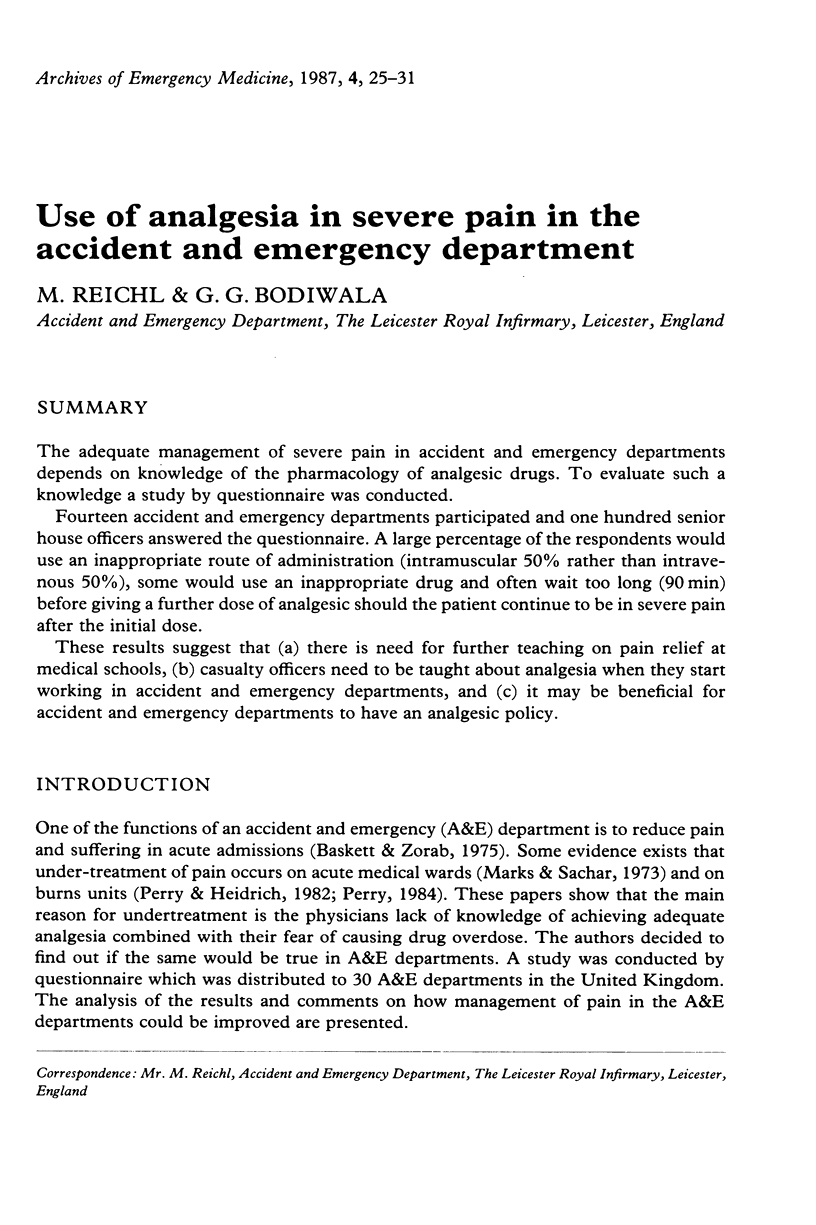
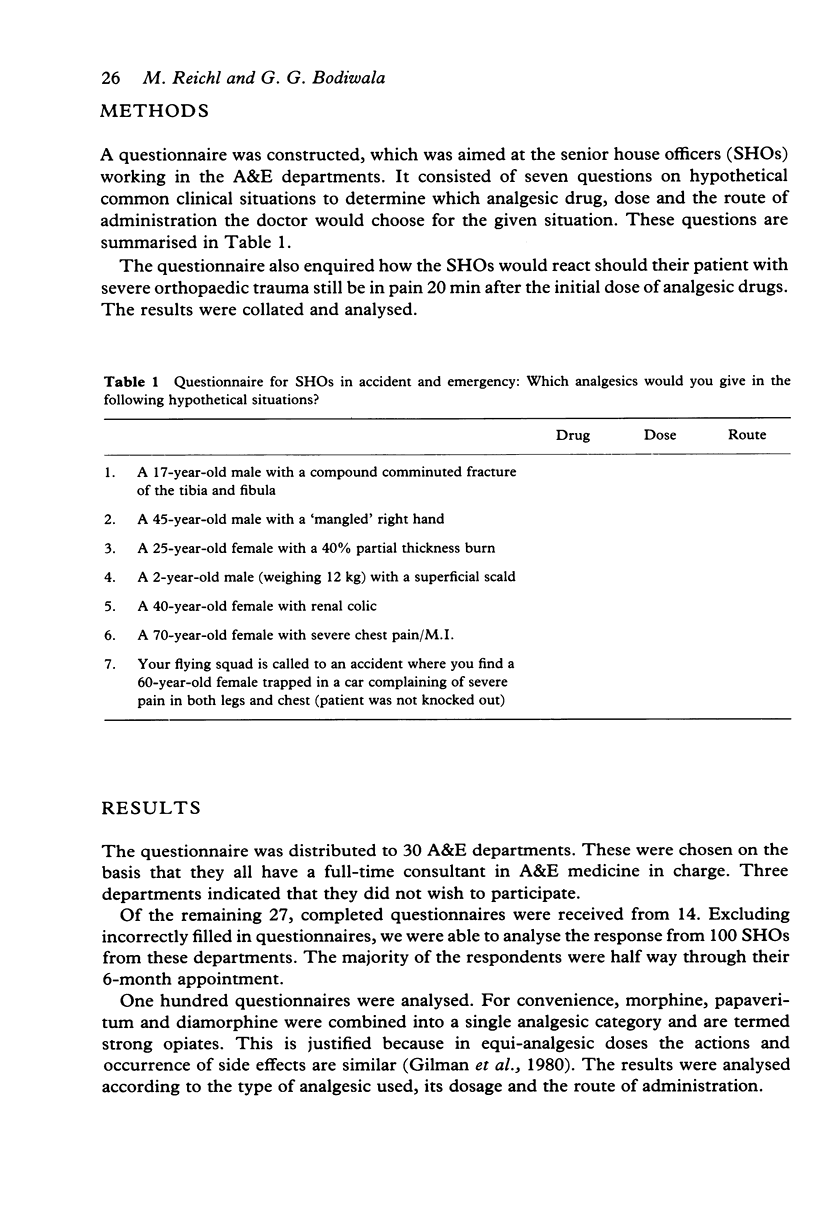
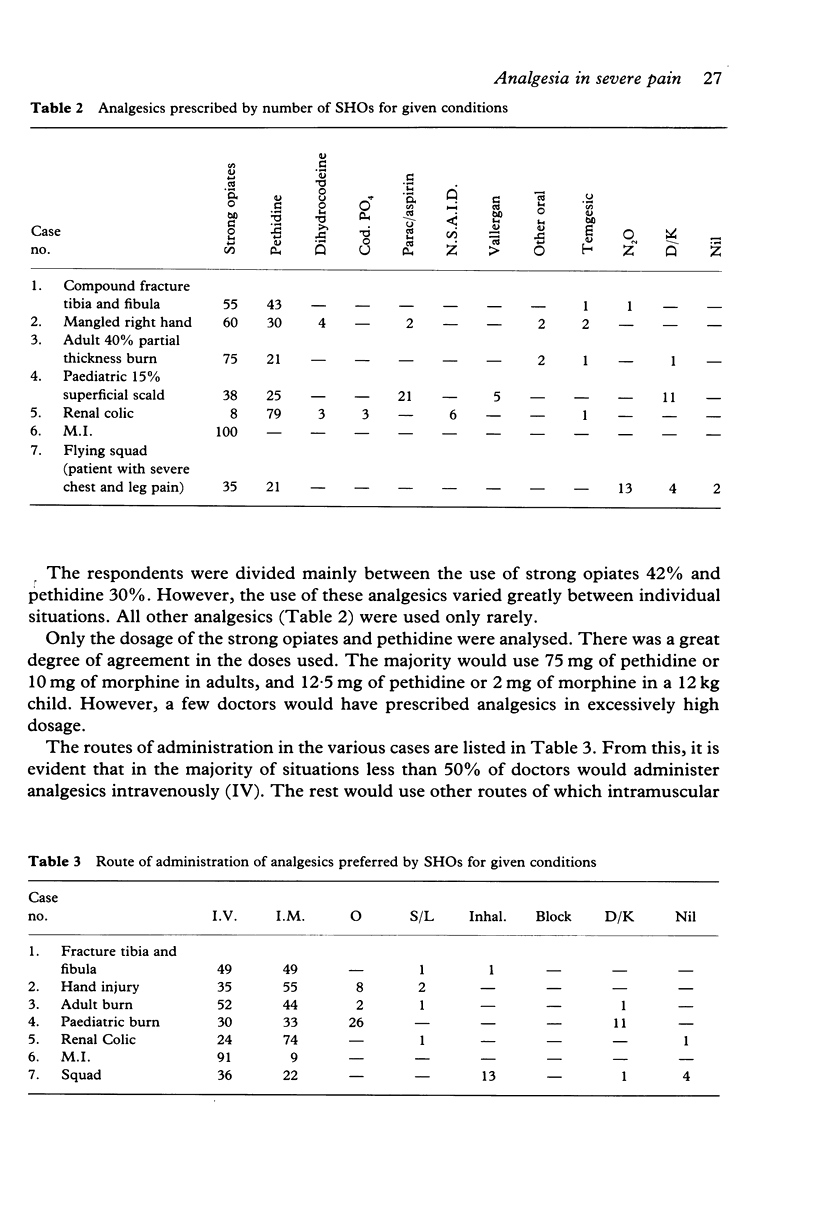
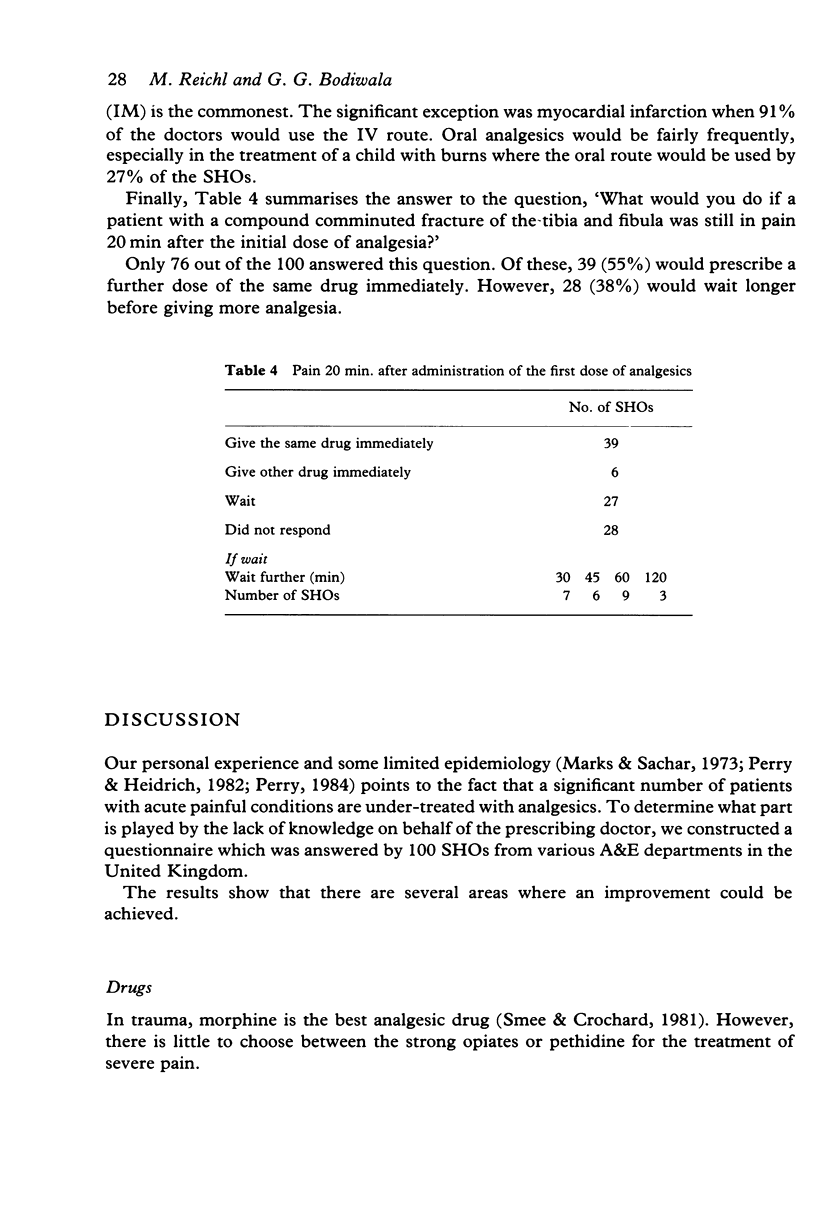
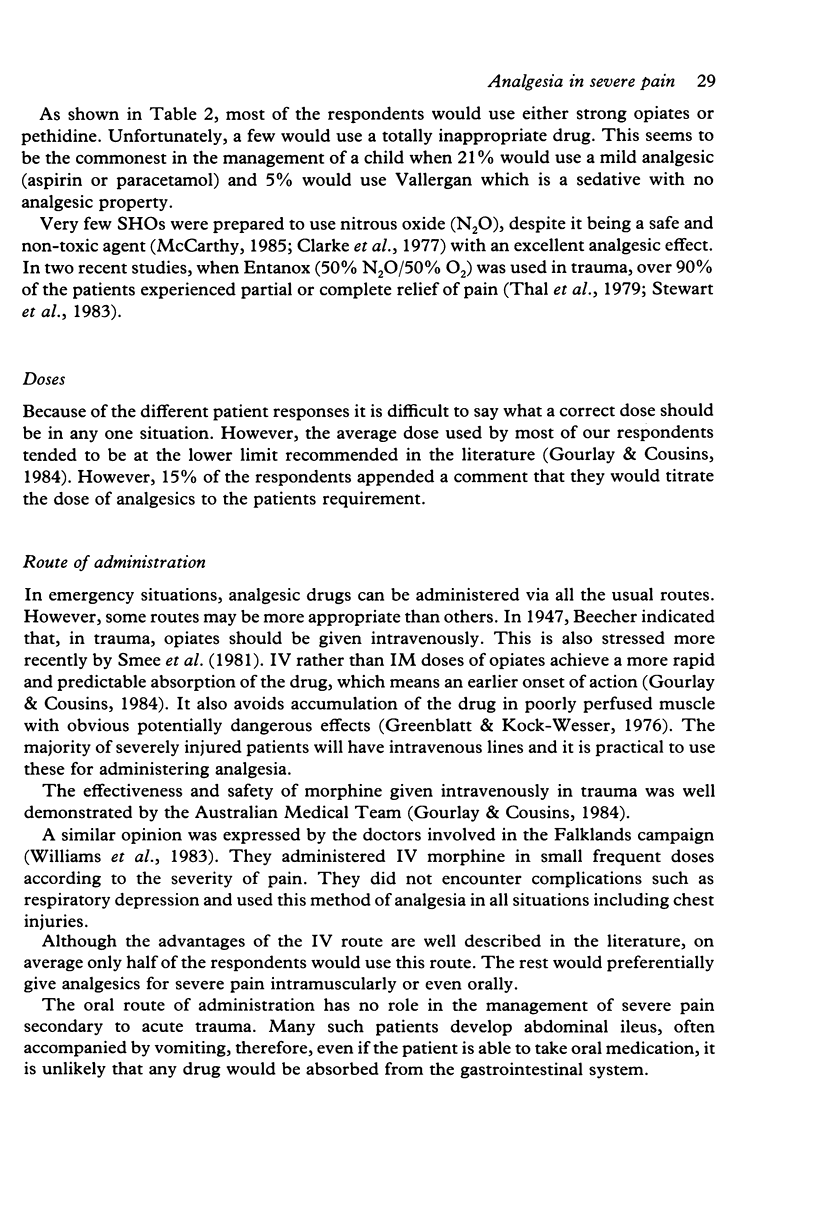
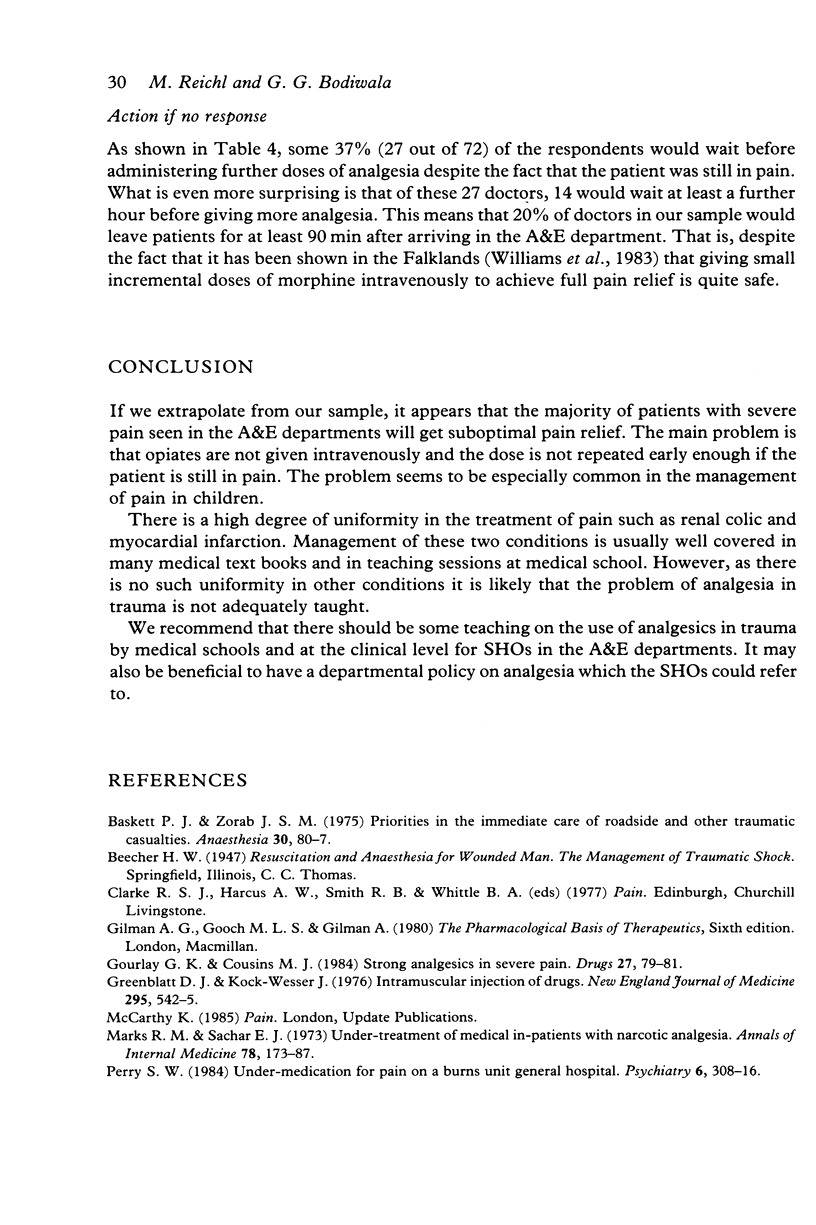
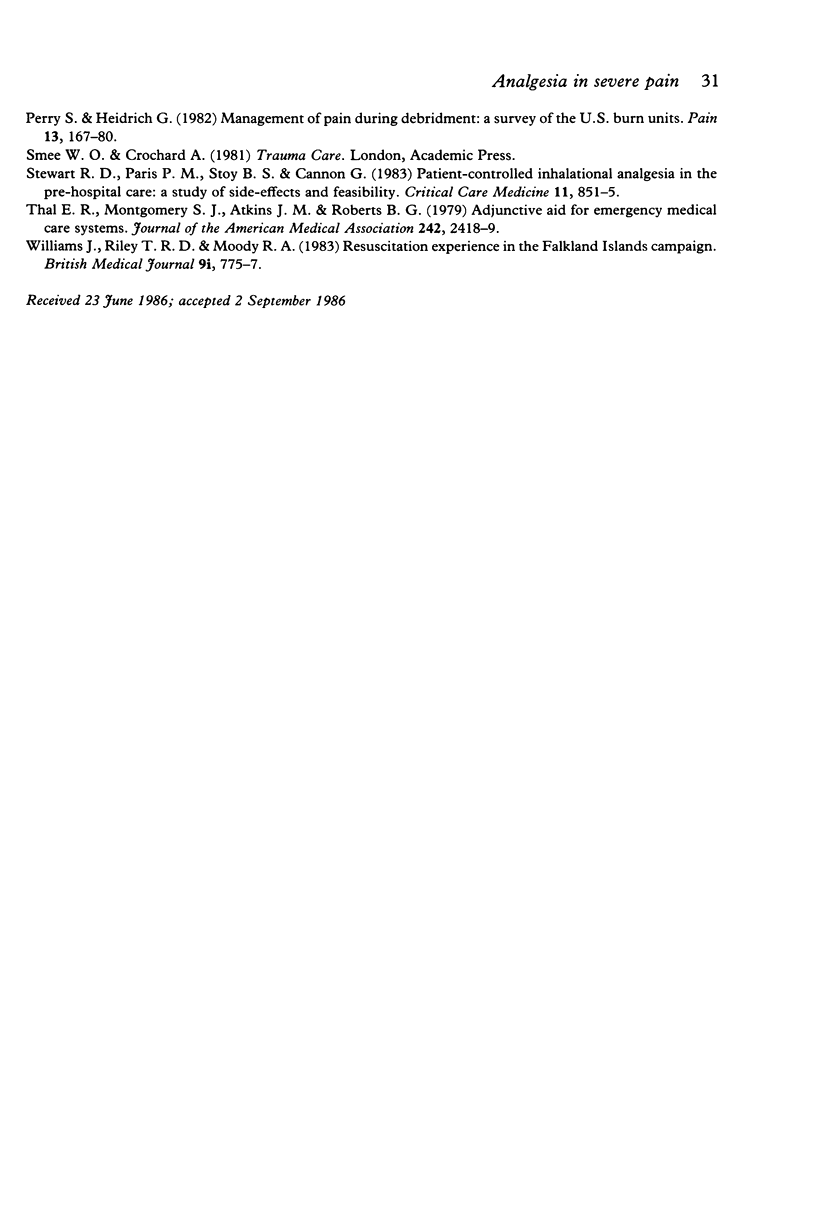
Selected References
These references are in PubMed. This may not be the complete list of references from this article.
- Baskett P. J., Zorab J. S. Priorities in the immediate care of roadside and other traumatic casualties. Anaesthesia. 1975 Jan;30(1):80–87. doi: 10.1111/j.1365-2044.1975.tb00802.x. [DOI] [PubMed] [Google Scholar]
- Gourlay G. K., Cousins M. J. Strong analgesics in severe pain. Drugs. 1984 Jul;28(1):79–91. doi: 10.2165/00003495-198428010-00005. [DOI] [PubMed] [Google Scholar]
- Greenblatt D. J., Koch-Weser J. Intramuscular injection of drugs. N Engl J Med. 1976 Sep 2;295(10):542–546. doi: 10.1056/NEJM197609022951006. [DOI] [PubMed] [Google Scholar]
- Marks R. M., Sachar E. J. Undertreatment of medical inpatients with narcotic analgesics. Ann Intern Med. 1973 Feb;78(2):173–181. doi: 10.7326/0003-4819-78-2-173. [DOI] [PubMed] [Google Scholar]
- Perry S. W. Undermedication for pain on a burn unit. Gen Hosp Psychiatry. 1984 Oct;6(4):308–316. doi: 10.1016/0163-8343(84)90026-4. [DOI] [PubMed] [Google Scholar]
- Stewart R. D., Paris P. M., Stoy W. A., Cannon G. Patient-controlled inhalational analgesia in prehospital care: a study of side-effects and feasibility. Crit Care Med. 1983 Nov;11(11):851–855. doi: 10.1097/00003246-198311000-00002. [DOI] [PubMed] [Google Scholar]
- Thal E. R., Montgomery S. J., Atkins J. M., Roberts B. G. Self-administered analgesia with nitrous oxide. Adjunctive aid for emergency medical care systems. JAMA. 1979 Nov 30;242(22):2418–2419. [PubMed] [Google Scholar]
- Williams J. G., Riley T. R., Moody R. A. Resuscitation experience in the Falkland Islands campaign. Br Med J (Clin Res Ed) 1983 Mar 5;286(6367):775–777. doi: 10.1136/bmj.286.6367.775. [DOI] [PMC free article] [PubMed] [Google Scholar]


